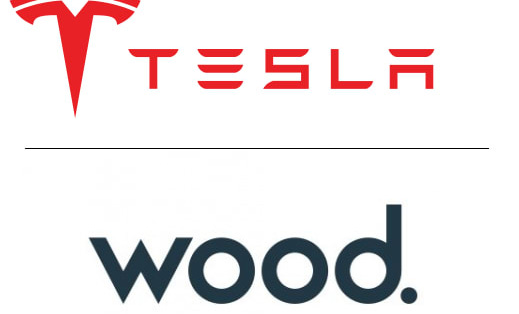Weekly Bulletin #27
The Second Inflationary Wave | Uranium - The Next Critical Mineral?
Disclaimer
Value Situations is NOT investment advice and the author is not an investment advisor.
All content on this website and in the newsletter, and all other communication and correspondence from its author, is for informational and educational purposes only and should not in any circumstances, whether express or implied, be considered to be advice of an investment, legal or any other nature. Please carry out your own research and due diligence.
The Second Inflationary Wave
As I continue to follow the Precarity of Supply theme and its implications for opportunities in public equities, an FT article from last week caught my attention. The piece reported on how German manufacturers are halting production in response to the surge in energy prices caused by Russia turning off gas supplies into Europe, which I believe heightens the risk of a “second wave of inflation” as articulated by Luke Gromen recently, as I highlighted in Bulletin #22.
One quote about manufacturing shutdowns from the FT piece stands out for me:
“It’s not good news, because it can mean that the industries in question aren’t just being restructured but are experiencing a rupture — a structural rupture, one that is happening under enormous pressure.” [emphasis in bold mine].
It’s worth remembering how critical Germany is to the European and wider global supply chain - Germany accounted for ~27% of total EU sold production in 2021, and is a major manufacturer of food and beverage products, basic metals and metal products, chemicals, machinery and transport vehicles. A shutdown in the production and supply of such items is likely to be inflationary given their essential nature and resilient demand profile to some extent in the post-Russia global economy. This is something Luke Gromen foresaw before Russia cut off the gas supply into Europe indefinitely last Friday, when he stated the following:
“… if there's not enough gas, there's not enough energy, European supply chains are going to break down… when that happens, global CPI is going to go up again… once that second wave of inflation hits from the global supply chain break down that will happen if the Europeans have to shut down their production facilities.”
This grim scenario appears to be materialising now, meaning more inflation is likely despite further ECB interest rate hikes - higher interest rates are not going to destroy demand for food or other materials essential to the basic functioning of society, the supply of which is now collapsing.
The reference to a “structural rupture” above chimes with my view (outlined in Bulletin #20) that the Russian invasion of Ukraine represents a structural, inflationary megatrend, namely a new global political and security order characterised by deglobalisation, onshoring and rebuilding of supply chains, increased defense spending and energy security. This shift requires new incremental supply of an enormous amount of commodities - which cannot be sourced from Russia - at the same time as the supply of everything from fertiliser to metals within Europe is collapsing due to the energy crisis.
Against this backdrop, a particular focus for me is searching for equities that should benefit from this new order and which should act as a hedge against a second, and possibly severe inflationary wave. Certain North American energy and fertiliser companies are one cohort that should benefit from the commodity price arbitrage between North America and Europe for natural gas/LNG, fertilisers and other related products.
Additionally, selected defense-related companies are also interesting given that they stand to benefit from increased defense spending as Europe re-arms itself in response to the threat from Russia and a generally more mistrustful geopolitical landscape. My recently published Gas Panic! idea (available to paid tier subscribers only) also continues to be one of the most interesting and asymmetric ideas that I’ve found within the energy security/inflation theme.
I’m currently working through a pipeline of ideas on this broader commodity/inflation/real assets theme, which I look forward to sharing with paid tier subscribers in the coming weeks and months.
Uranium - The Next Critical Mineral?
A Bloomberg article, Uranium Risks Becoming the Next Critical Minerals Crisis , from last weekend made for particularly interesting reading, given how the spot price of uranium is up ~6% over the past 2 weeks. The piece reported how uranium’s supply chain is as susceptible to geopolitical manipulation as those for natural gas, cobalt, and rare earths, noting that authoritarian nations (China, Russia, Iran, Pakistan) dominate the world’s production of uranium. Interestingly, the article also highlights the potential precarity of supply from Kazakhstan, which is the world’s largest producer, providing ~40% of the world’s uranium.
Kazakh president Kassym-Jomart Tokayev recently stated that Kazakhstan did not recognise the Russian separatist republics of Donetsk or Luhansk in Ukraine and did not support Russia’ invasion of Ukraine -a brave move given Russia’s capacity for aggression against its former Soviet neighbours. Given that uranium is a key export and the fact that Kazakhstan relies on access to Russia and other neighbouring countries (also under Russian influence) to transport uranium over land, there is a risk that Kazakh supply of uranium to the West could be cut-off.
In a further interesting development, it was reported that Chinese President Xi Jinping will visit Kazakhstan next week in what will be his first trip overseas in more than two and a half years since the COVID pandemic began. The timing of this visit seems curious to me for a number of reasons:
It comes at a time of increased tension between Russia, China’s main political ally, and Kazakhstan;
It is very unusual for a Chinese leader to travel abroad so close to the CCP’s party congress in October, and all the more so given that Xi is seeking to secure an unprecedented third term as president during a particularly sensitive time domestically - note the social unrest within China due to ongoing lockdowns under Xi’s zero-COVID policy;
The uranium market is in a structural supply deficit, and China is currently building out 150 new nuclear reactors over the next 15 years as part of its carbon neutral goals, which would make the it the world’s largest generator of nuclear power.
The purpose of the visit is unclear, but it’s being reported that the Kazakh and Chinese leaders will “sign a variety of agreements during the visit.” It seems clear to me that China is seeking to secure multiyear supplies of uranium for its nuclear power programme, just as other nations look to either restart or pivot back to nuclear power due to the energy crisis and net-zero climate targets (recall that nuclear power is a zero-emission clean energy source). In recent months, France, the UK, Japan and South Korea have all announced new investment in nuclear power, while Germany is delaying its phase-out of nuclear power, and is expected to ultimately have to reverse its nuclear exit strategy due to its exposure to Russia and the energy crisis.
All of this points to rapidly increasing competition for a limited number of lbs of uranium compound used for nuclear fuel - recall that the market is in structural deficit with ~200m lbs of current annual demand vs. ~160m lbs of supply (~135m lbs of primary supply from mines, plus ~25m lbs of secondary supply from underfeeding, mobile inventories etc). If China builds out its 150 new reactors as planned, that equates to new incremental demand of ~75m lbs per annum in the next 10-15 years - that’s a ~40% increase on current demand levels! Despite this, there continues to be little-to-no investment in new uranium projects given the market price/lb remains below the $55+ price level needed to incentivise new uranium mine production. This suggests uranium could be set for the ultimate commodity squeeze, with rapidly rising demand colliding with a widening supply deficit.
But there is a further complication to uranium supply that is not yet priced into uranium equities in my view, and that is Kazakhstan’s proximity to and tension with Russia. I believe it is very plausible that Russia could invade Kazakhstan at some point, preventing the supply of Kazakh uranium from reaching the West and thus creating a similar and critical supply crisis as with natural gas. At the same time, Chinese offtake of uranium from a Russian-controlled Kazakhstan would bolster the Russian/Kazakh economies and offset any sanctions or loss of revenues from supplying Western utilities and customers. Note this is not a prediction on my part, but just a possible scenario that is not being adequately considered by market participants in my view.
In short, Xi’s upcoming visit to Kazakhstan is worth monitoring closely as I believe it may have a significant bearing on the uranium thesis. As I’ve written before, Yellow Cake Plc (YCA) is my preferred way to play this theme - it is up ~41% since I first wrote about it last September, and trades at a ~7% discount to NAV as at the time of writing. I believe it remains a compelling and highly asymmetric situation.
Any Other Business
For this week’s AOB I thought I’d share a somewhat sobering piece from GMO’s Jeremy Grantham published last week entitled Entering The Superbubble’s Final Act.
The thrust of Grantham’s argument is that the recent rally in equity markets from mid-June to mid-August was a classic bear market rally that portends a superbubble bursting. He bases his argument on the fact that the few financial market superbubbles throughout history have all had clear features in common, including simultaneous overvaluation across multiple asset classes, surging inflation, interest rate shocks, and a bear market rally marking the midpoint of a deflating supperbubble.
The following extract captures the point well:
The current superbubble features the most dangerous mix of these factors in modern times: all three major asset classes – housing, stocks, and bonds – were critically historically overvalued at the end of last year. Now we are seeing an inflation surge and rate shock as in the early 1970s as well. And to make matters worse, we have a commodity and energy surge (as painfully seen in 1972 and in 2007) and these commodity shocks have always cast a long growth-suppressing shadow.
Given the parallels of the current market with previous superbubbles, he suggests that if the recent market rally is not in fact a bear market rally, i.e. if the technical bear market experienced earlier this year is over, then this implies a “this time its different” scenario given the strength of the other parallels to date.
Only time will tell if Grantham’s theory is correct, but his latest piece certainly makes for interesting reading.
Why Not Subscribe to the Paid Tier?
If you find the ideas in this newsletter interesting, please consider signing up to the Paid Tier.
You can read more about the paid offering here.
This newsletter is 100% reader supported and free from conflicts of interest or other commercial considerations. In writing Value Situations my job is essentially to generate ideas for subscribers that supplements their own idea origination process.
Furthermore, I believe the value proposition for paying subscribers is compelling. I am a former private equity/special sits investor that has worked with one of the largest alternative investment firms in the world, and so paying subscribers will be getting thoughtful, buy-side quality ideas and analysis for a very small fraction of the cost of employing a buy-side analyst full-time.
If you find this newsletter interesting, please also consider sharing it with friends and colleagues by clicking the Share button below.
Here’s what other investors are saying about Value Situations:






Value Situations was named as one of the Top 100 Must Follow Stock Research accounts by Edwin Dorsey of The Bear Cave Newsletter:
















There's a lot of discussion of Russia being overextended in Ukraine, and perhaps needing conscripts. Doesn't this make them opening another front in Kazakhstan unlikely? Along with this, if China has an interest in Kazakh Uranium, doesn't an invasion risk alienating Russia's most powerful (sort of) ally?